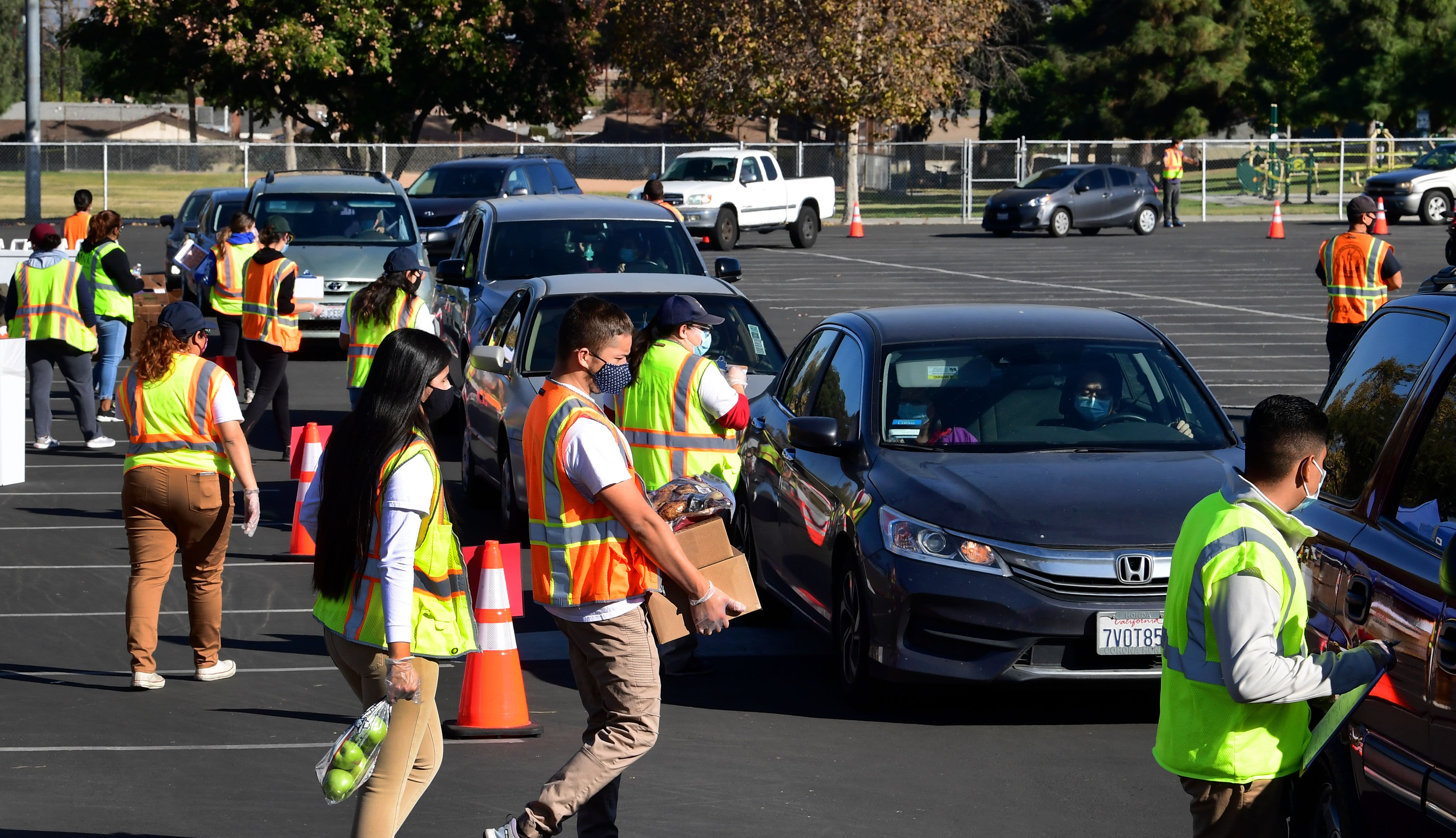A drive-in “Let’s Feed LA County” food distribution event hosted by the Los Angeles Food Bank on Dec. 4, 2020 in Hacienda Heights, California.
FREDERIC J. BROWN | AFP | Getty Images
However, states must wait to begin issuing the funds. The president’s signature starts a chain reaction that will likely end with workers getting their first checks well into January, according to unemployment experts.
Plus, Trump’s delay in signing the relief bill, which Congress passed a week ago, allowed two unemployment programs supporting 14 million Americans to expire over the weekend.
More from Personal Finance:
Stimulus checks are on the way. What you need to know
Trump signs off on $600 stimulus checks
Is $300 unemployment boost a work disincentive? Bill revives anxiety
Bringing those back on line could further slow the process, creating a wider gap in benefits for those who lost them.
“Unfortunately, by delaying the signing of the bill and letting these programs lapse, President Trump likely increased the delay these workers will experience in getting their [unemployment] benefit payments,” said Elizabeth Pancotti, a policy advisor at Employ America, a progressive think tank.
Delays in jobless benefits
The U.S. Department of Labor must now rush to issue guidance to states on how to implement the law’s unemployment provisions. States must then code in the new rules and pay workers. The length of that administrative process will vary by state.
The Labor Department didn’t immediately return a request for comment.
While some states will likely start disbursing aid in the next few weeks, others may take as many as five to seven weeks, Pancotti said. That would mirror workers’ experience with a prior $300 weekly boost to benefits via a Lost Wages Assistance program over the summer, she said.
Michele Evermore, a senior policy analyst at the National Employment Law Project, believes the process will take at least two to three weeks.
Workers would receive back pay if there are delays.
Fewer weeks of back pay
But exactly how many weeks of back pay they will get has been called into question by Trump’s lag in signing the relief package.
As things stand, it appears unemployed workers will get 10 weeks of extra benefits — one fewer than the law intended.
“The President’s pointless delay in approving this relief legislation cost millions of Americans a week’s worth of pandemic-related unemployment assistance that they desperately need,” Rep. Richard Neal, D-Mass., chairman of the House Ways and Means Committee, said Sunday night.
The White House didn’t immediately return a request for comment.
It may not yet be a done deal, however, according to Evermore.
“It’s really unclear,” she said.
States must sign contracts with the federal government relative to the relief law’s extra jobless aid, which is federally funded. The same process occurred in the spring when the CARES Act was passed.
This week was to be the first available week of extra benefits offered by the relief law.
But due to administrative rules, workers likely won’t be able to collect benefits for the current week even if states were to sign necessary contracts this week, Evermore said.
There may be a workaround available, whereby states merely amend their CARES Act contracts instead of signing new ones altogether. That would allow for 11 weeks of benefits instead of 10, Evermore said.
However, it’s a “stretch” and will depend on how the Labor Department interprets the law, she said.
